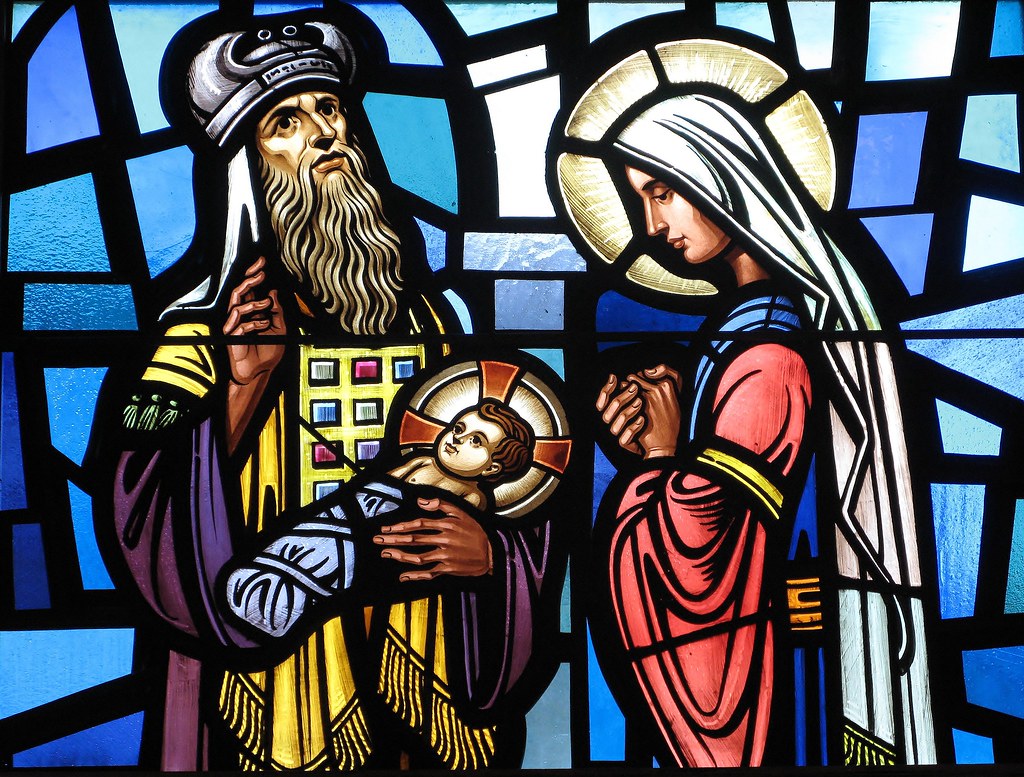
Luke 2:25-33 "And there was a man in Jerusalem whose name was Simeon; and this man was righteous and devout, looking for the consolation of Israel; and the Holy Spirit was upon him. 26 And it had been revealed to him by the Holy Spirit that he would not see death before he had seen the Lord’s Christ. 27 And he came in the Spirit into the temple; and when the parents brought in the child Jesus, to carry out for Him the custom of the Law, 28 then he took Him into his arms, and blessed God, and said, 29 “Now Lord, You are releasing Your bond-servant to depart in peace, According to Your word;
30 For my eyes have seen Your salvation, 31 Which You have prepared in the presence of all peoples, 32 A Light of revelation to the Gentiles,
And the glory of Your people Israel.”
33 And His father and mother were amazed at the things which were being said about Him."
Introduction:
Over the last couple of days we have been considering how Jesus' presentation at the temple by Joseph and Mary portray Him being God's Perfect Gift. Thus far we have noted how He is the Gospel's Savior and the fact that He is infinitely holy. Today we want to consider two final reasons: The fulfillment of prophecy and the fact that Jesus is the treasure of grace.
The Spirit of prophecy that was present on the day Jesus was presented at the temple
We find two important figures in this episode of Jesus early human life. Simeon is described as a devout man. We can further note that Simeon was functioning in a prophetic role, since Luke 2:25 states how "the Holy Spirit was upon Him." Simeon had upon him the Spirit of prophecy that enabled Him to utter incredible predictions concerning the Lord Jesus Christ. Anna the prophetess is presented as well, solidifying to reads the presence of prophetic activity in this scene.
We know from other passages in the Bible the role the prophetic office had in preparing the way for the coming of the Messiah. 1 Peter 1:10-11 states - "As to this salvation, the prophets who prophesied of the grace that would come to you made careful searches and inquiries, 11 seeking to know what person or time the Spirit of Christ within them was indicating as He predicted the sufferings of Christ and the glories to follow. 12 It was revealed to them that they were not serving themselves, but you, in these things which now have been announced to you through those who preached the gospel to you by the Holy Spirit sent from heaven—things into which angels long to look." Jesus Himself notes in Luke 24:44 "Now He said to them, “These are My words which I spoke to you while I was still with you, that all things which are written about Me in the Law of Moses and the Prophets and the Psalms must be fulfilled.”
By the time Jesus would finish His ministry and go to the cross, more than 100 prophecies would be fulfilled. The presence of Simeon and Anna both signify how it was that Jesus Christ was God's Perfect Gift - He fulfilled prophecy. So, we have seen thus far how Jesus is God's perfect gift: He is the Gospel's Savior, infinitely holy and the fulfillment of prophecy. Now lets consider one final reason as we close out this blog series...
Jesus Christ, as God's perfect gift, is the treasure of grace.
In Luke 2:39-40 we read - "When they had performed everything according to the Law of the Lord, they returned to Galilee, to their own city of Nazareth. 40 The Child continued to grow and become strong, increasing in wisdom; and the grace of God was upon Him." Jesus Christ came as the embodiment of grace. John 1:17 states - "For the Law was given through Moses; grace and truth were realized through Jesus Christ. Or again, Titus 2:11-12 "For the grace of God has appeared, bringing salvation to all men, 12 instructing us to deny ungodliness and worldly desires and to live sensibly, righteously and godly in the present age." Now we know, going back to Luke 2, that Jesus was treasured by the response to the earlier announcement by the shepherds we see in Mary herself in Luke 2:19-20 "But Mary treasured all these things, pondering them in her heart. 20 The shepherds went back, glorifying and praising God for all that they had heard and seen, just as had been told them."
Years ago I heard a preacher speaking at a conference. He told the crowd that when we proclaim Jesus Christ in our Gospel presentations, we rightly refer to Him as "Savior" and "Lord". The first title speaks to our rescue from wrath and sin and the second speaks of Christ's authority over the believer from conversion through sanctification and into eternity. However, there is that third element that speaks of the affections one ought to have for this Savior and Lord - namely that He is "treasure". Colossians 2:3 communicates this point of Jesus Christ being the treasure of grace: "in whom are hidden all the treasures of wisdom and knowledge." Would it be that as we contemplate God's Perfect gift, Jesus Christ, that we would grasp the fact that He is the treasure of grace.
Closing thoughts
We have spent these last few days considering God's Perfect Gift. We have looked at how Jesus' presentation at the temple by his parents has quite a bit to teach us about this truth. We utilized the acrostic g.i.f.t to flesh out what is meant when we say that Jesus Christ is God's Perfect Gift.
Gospel's Savior - Luke 2:21
Infinitely Holy - Luke 2:22-24
Fulfillment of Prophecy - Luke 2:25-38
Treasure of Grace - Luke 2:39-40






